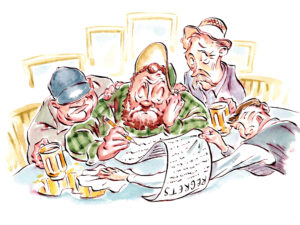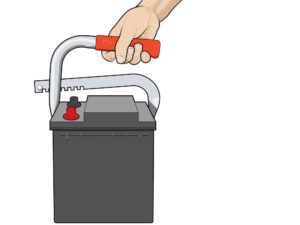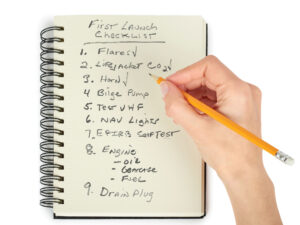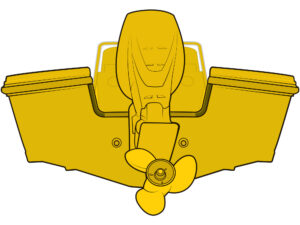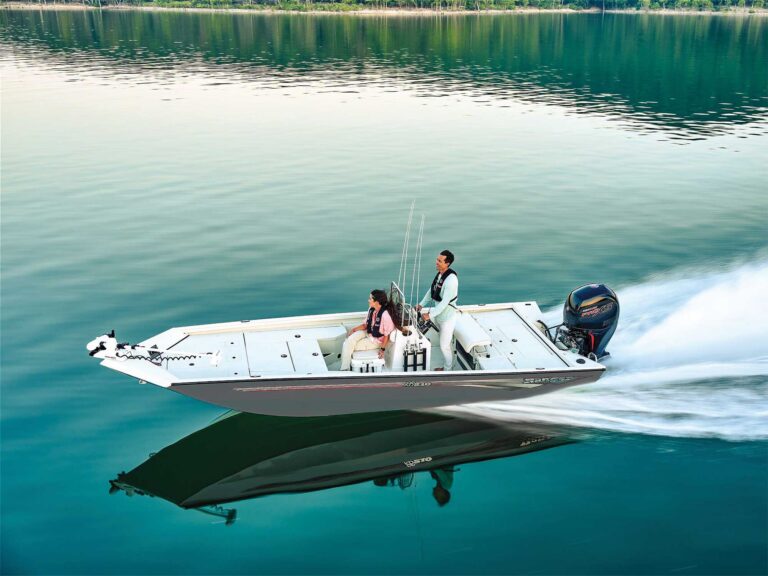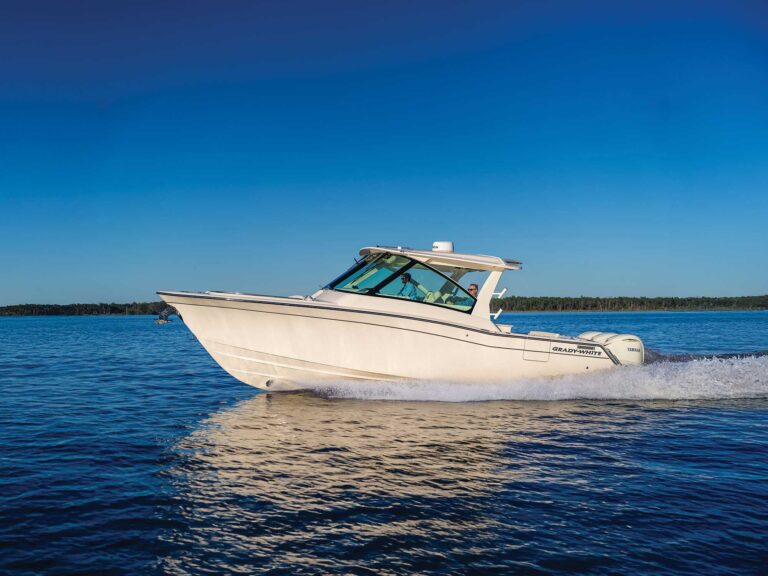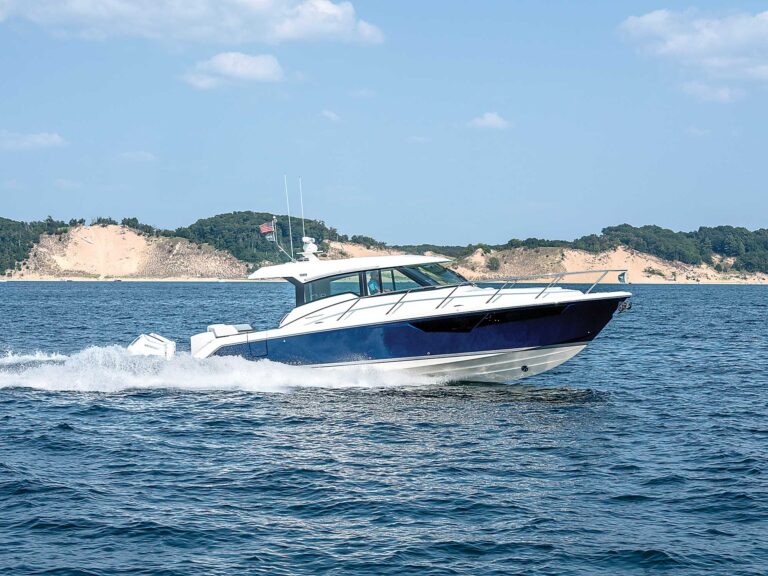My Bluewater 2550 was three years old last fall and had run beautifully on a pair of Evinrude E-Tec 200s, but over time, the throttle cables began to stretch and wear. The damage made it difficult to synchronize and shift the engines in a coordinated manner. So, when Evinrude developed its Icon digital throttle controls with a retrofit package, my wife and I arranged to make the switch.
I’ve driven many boats with many brands of motors and their digital controls, so I was aware of the treat ahead. But my wife, Linda, an arthritis sufferer who relinquishes the helm only under extreme coercion, was not. She’d become accustomed to ham-fisting dual controls, powering them up and down while pulling kids on our nearby lakes. We all laughed and played, but at the end the day, she’d secretly pop Advil and rub her throttle-weary wrists and hands.
First time out with the new controls, I gave Linda brief instructions and stepped out of the boat. She returned a half-hour later with this to say:
“This is a completely new boat. It changes everything.”
Digital throttle controls do their job in a variety of ways, but the bottom line is you get added control, less fatigue in managing engines and some really slick added benefits that make them worth the price when you repower or — for the rare motors that can be retrofitted with the systems — worth the money to change over.
Across brands, digital controls take advantage of computerized engine functions to issue commands much like a mouse on a PC, but with the familiar feel of levers and a few simple buttons.
Common features include ease of adding a second helm and the ability to fine-tune trolling, skiing or running speeds and hold them without holding the throttles.
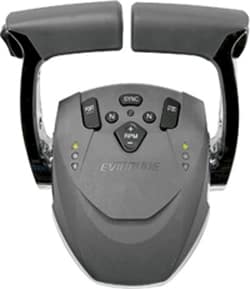
Evinrude ICON
The Hardware: Single-engine controllers are available in side-mount or binnacle styles. Twins to quints — yes, five engines — are controlled by a two-lever binnacle. All feature polished chrome bases and levers with composite accents.
Fittable and Retrofittable to: Icon controls can be retrofitted to all Evinrude V-6 engines from 150 hp up and factory-fitted to 250 hp and 300 hp engines.
Multiple Engines: Only Evinrude’s Icon handles five engines and automatically synchronizes them for smooth running. During pivoting and docking, the center engine automatically shifts to neutral and remains that way until and unless throttle/shift controls align at common gears and speeds.
Special Features: Powersync gives control of two or more engines to one throttle, syncing engine speed, and forward, neutral and reverse, to allow multiple engines to be run in sync by one throttle. Rpm Tune allows 1 percent throttle changes to be made at the punch of a button, letting the operator choose the best trolling or skiing speed or most economical cruise speed and hold it.
Likes: Lighted forward-neutral-reverse shift position indicators are easy to read at a glance, and engine sync function is most easily engaged of them all. One key operates all engines, and each engine has a single push-button on/off switch.
Dislikes: Binnacle controls occupy a smaller footprint than manual controls do, requiring a plate to retrofit. The gray polymer binnacle cap is not as sharp-looking as the stainless and chrome competitors’.
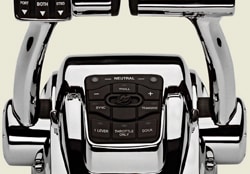
Mercury DTS
The Hardware: DTS controls are available in twinbinnacle, single and single-side mounts. Additionally, Mercury Racing Zero Effort style emulates the performance look where desired.
Fittable and Retrofittable to: All Verado engines from 150 hp to 300 hp
Multiple Engines: Can be fitted to dual, triple or quad installations. Using Shadow Mode causes inside engines to mimic outside engines. The center engine in triple setups copies the port engine.
Special Features: When levers are within 10 degrees of each other, engines automatically sync revolutions per minute. Docking mode reduces maximum rpm, improving and easing dockside close-quarters control.
Likes: Polished chrome levers and base are rugged-looking and sharp. Individual and synced engine trim switches are combined on the left lever, giving handy control of twin engines. A throttle-only button leaves no question as to how to warm up the engines in neutral.
Dislikes: Speed control works only at trolling speed. The system is the only one that doesn’t speak NMEA 2000, allowing NMEA 2000 GPS systems to display engine data.
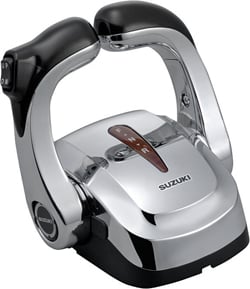
Suzuki Precision Control (SPC)
The Hardware: Suzuki opted for simplicity plus a polished chrome finish on binnacles and levers for top-mounted single and dual controls and, unlike the other makers, carried that look to the side-mounted controls. Trim controls for multiple engine setups are on a separate waterproof control panel.
Fittable and Retrofittable to: Today, SPC is available only for Suzuki’s 300 hp engines and can be retrofitted for boaters who have not chosen the product with their original equipment.
Multiple Engines: SPC can manage up to three DF300s, and the center engine follows throttle and shift input of the port engine.
Special Features: SPC lacks push-button speed controls but incorporates a simple and effective engine sync mode once the levers are in “the same rpm vicinity.” Dealers and owners will benefit from the incredibly short two-minute initiation process using a laptop and Suzuki’s diagnostic systems.
Likes: Best looking of the four systems, the sleek corrosion-proof look is easy to care for. Individual trim and on/off engine switches are on separate waterproof control pads. NMEA 2000 protocol means the system can display engine data on NMEA 2000 GPS units.
Dislikes: Traditional dual handle controls don’t allow single-lever operation, and controls lack push-button speed adjustments.
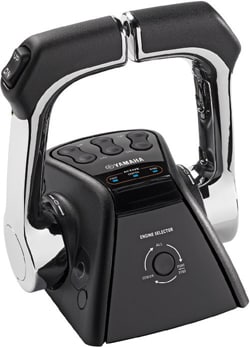
Yamaha Command Link Plus
The Hardware: The upgraded Plus system built on former Yamaha digital equipment adds the capability of four rather than just three engines with a single key and separate engine on/off buttons.
Fittable and Retrofittable to: Yamaha F350 and F250B (secondgeneration model)
Multiple Engines: Automatic sync functions align engines to same revolutions per minute; a four-engine control plate is available for quad setups. The new system speaks with NMEA 2000 electronics as well as Yamaha’s new fiveinch color digital displays.
Special Features: An analog gauge interface interprets digital data from the engine so it can be displayed on boats equipped with analog gauges. Plus, a transom-mounted transducer gives speed over water and surface temperature on instruments. One electronic control unit per engine instead of one ECU per rig gives redundancy and safety.
Likes: Push-button 50 rpm trolling adjustments are easy to make between 600 rpm and 1,000 rpm. Rugged controls include chrome-like levers and glossy black binnacle, one-key operation and separate on/off switches.
Dislikes: The system is, at the moment, offered only on the largest Yamaha engines.
Have experience with digital throttles? What are your likes and dislikes? Let us know in the forums.

